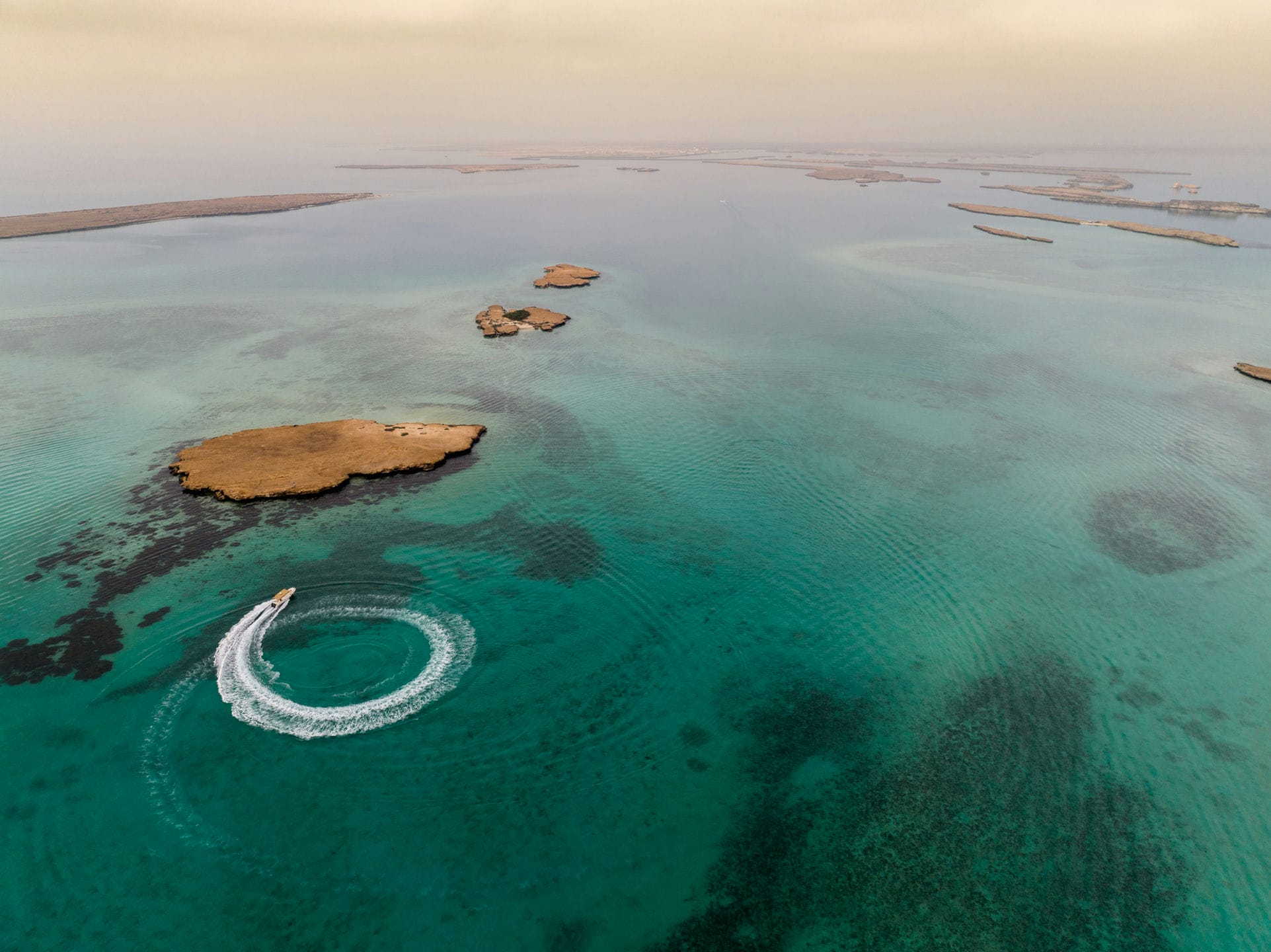Protected Areas
About Protected Areas
Protected Areas (PAs) clearly defined as geographical regions, recognized, designated and managed through legal or other effective mechanisms aimed at achieving the conservation of nature and the accompanying services of ecosystems and cultural values within a long period (IUCN, 2008).
The Main Objectives of Protected Area Management
- - Achieving Vision 2030 according to the Saudi Green Initiative by protecting 30% of the land and sea areas.
- - Preserving natural habitats and biodiversity in the Kingdom.
- - Achieving the Kingdom's commitment to the Convention on Biological Diversity ( CBD ) and sustainable development goals ( SDGs ).
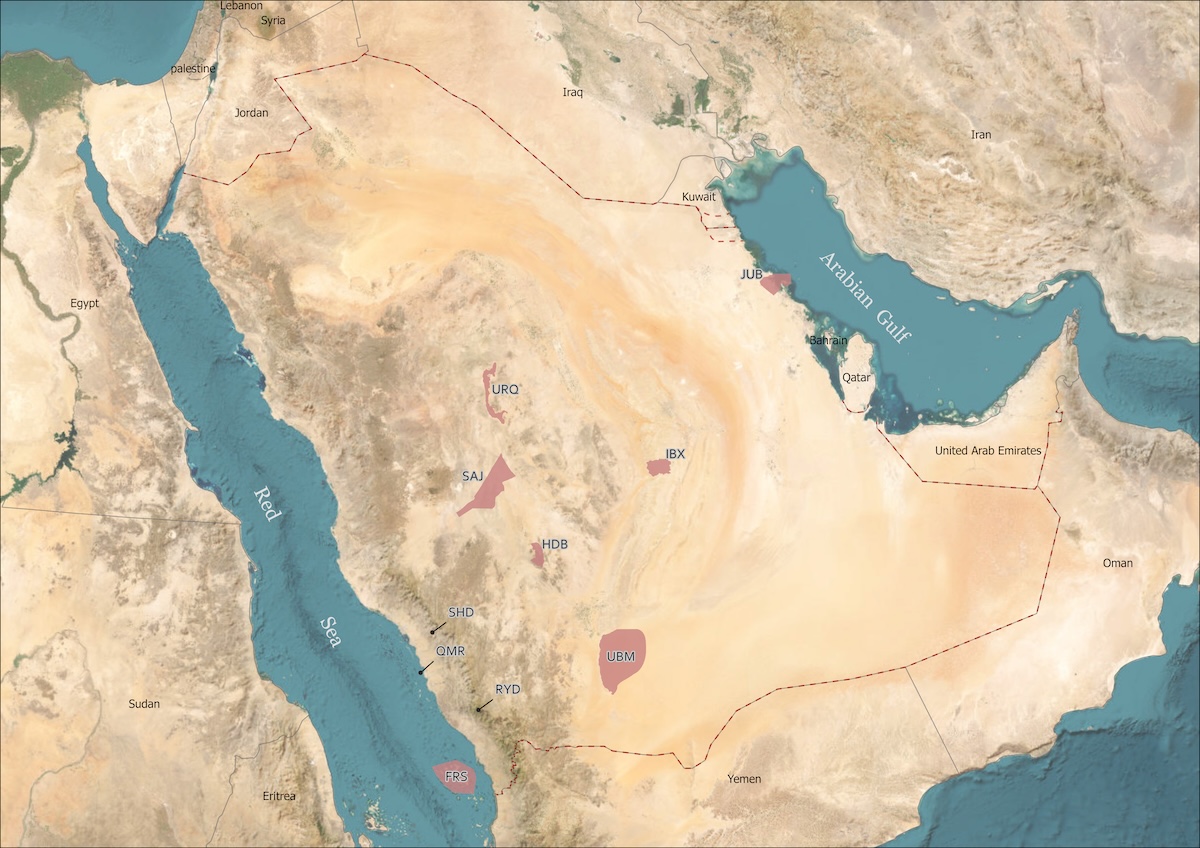
Existing Areas
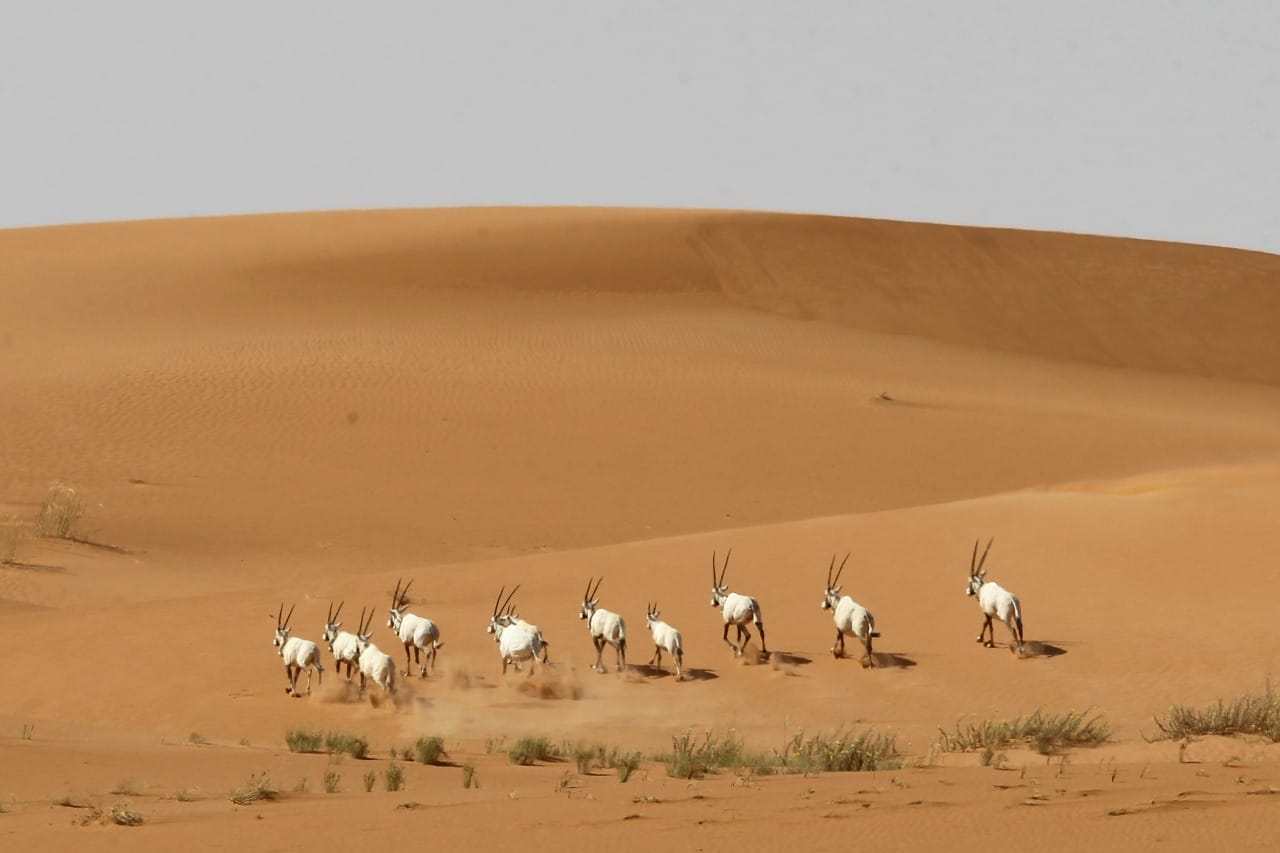
‘Uruq Bani Ma’arid (World Heritage Site)
Code: UBM
The property encompasses the western part of the greatest expanse of windblown sand on Earth, known as Ar Rub' al-KhaIi, and conserves a portion of one of the Earth’s most spectacular desert landscapes. The varied topography of the property creates a wide range of ecosystems. The site is globally notable due to the reintroduction of iconic desert animals, including the Arabian Oryx (Oryx leucoryx) and Arabian Sand Gazelle (Gazella marica). In the case of the Oryx, this was after decades of extinction in the wild. The mobile dunes also provide an excellent and well-oxygenated habitat for sand-diving invertebrates and reptiles, while incised wadis in the limestone plateau harbor rare relict plants. The area has also been used for generations by pastoral, nomadic Bedu.
Plant species:
‘Uruq Bani Ma‘arid is an important site for wild plant conservation, qualifying as an Important Plant Area (IPA), a site with local endemic, near endemic, regional endemic and/or regional range-restricted taxa. This includes Ziziphus spina-christi var. divaricata, four species endemic to the Arabian Peninsula, Limeum arabicum, Calligonum crinitum ssp. arabicum, Cornulaca arabica, and Tribulus macropterus var. arabicus, in addition to nine plant species endemic to the region (Arabian Peninsula and east Africa).
Animal species:
In addition to the Arabian Oryx and the Arabian Sand and Mountain Gazelles, the protected areas embrace a wide variety of wildlife of conservation important including the Sand Cat, the Wild Hare, the Sand Fox, the Spiny Tailed Lizard, the Monitor Lizard, the Lappet-faced Vulture, and the Hubara, in addition to many other mammals, birds, reptiles, and invertebrates.
Shada Mountain Protected Area
Code: SHD
It is located in the southwest of the Al-Baha area, northwest of Al-Makhwah Governorate, at a distance of 20 km has an area of 68.6 km² (26.4 square miles). It is considered a reserve of a special nature. The upper Shada mountain and almost parallel to it is an extension of the Sarawat mountains to the west. And the mountain rises above the sea surface by about 2200 meters above sea level. The heights consist of basaltic rocks from which valleys descend.
The Plants
Among the most important trees of the park are juniper and opacity (wild olives), in addition to many bushes, herbs and weeds.
Wildlife Creatures
The PA include Arab tiger, striped hyena, Arab wolf, foxes, and lynx.
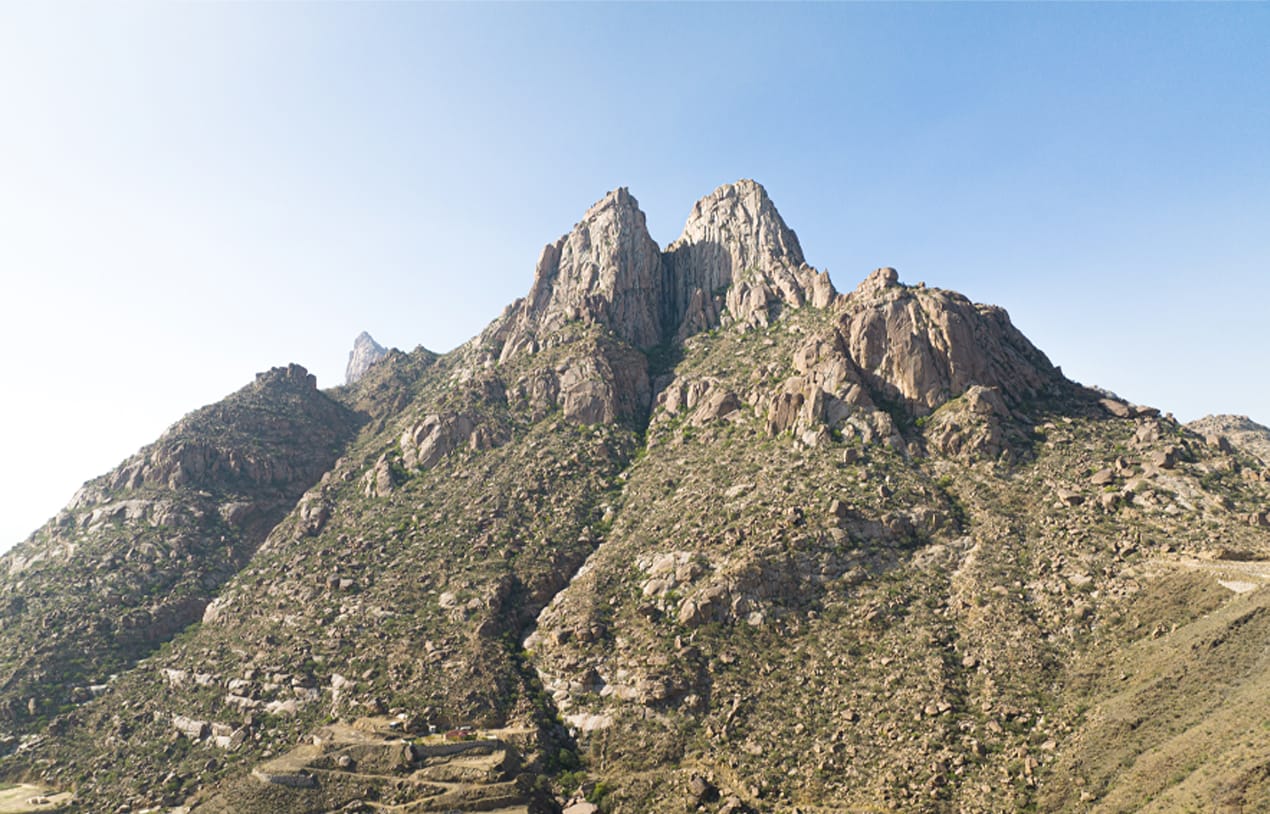
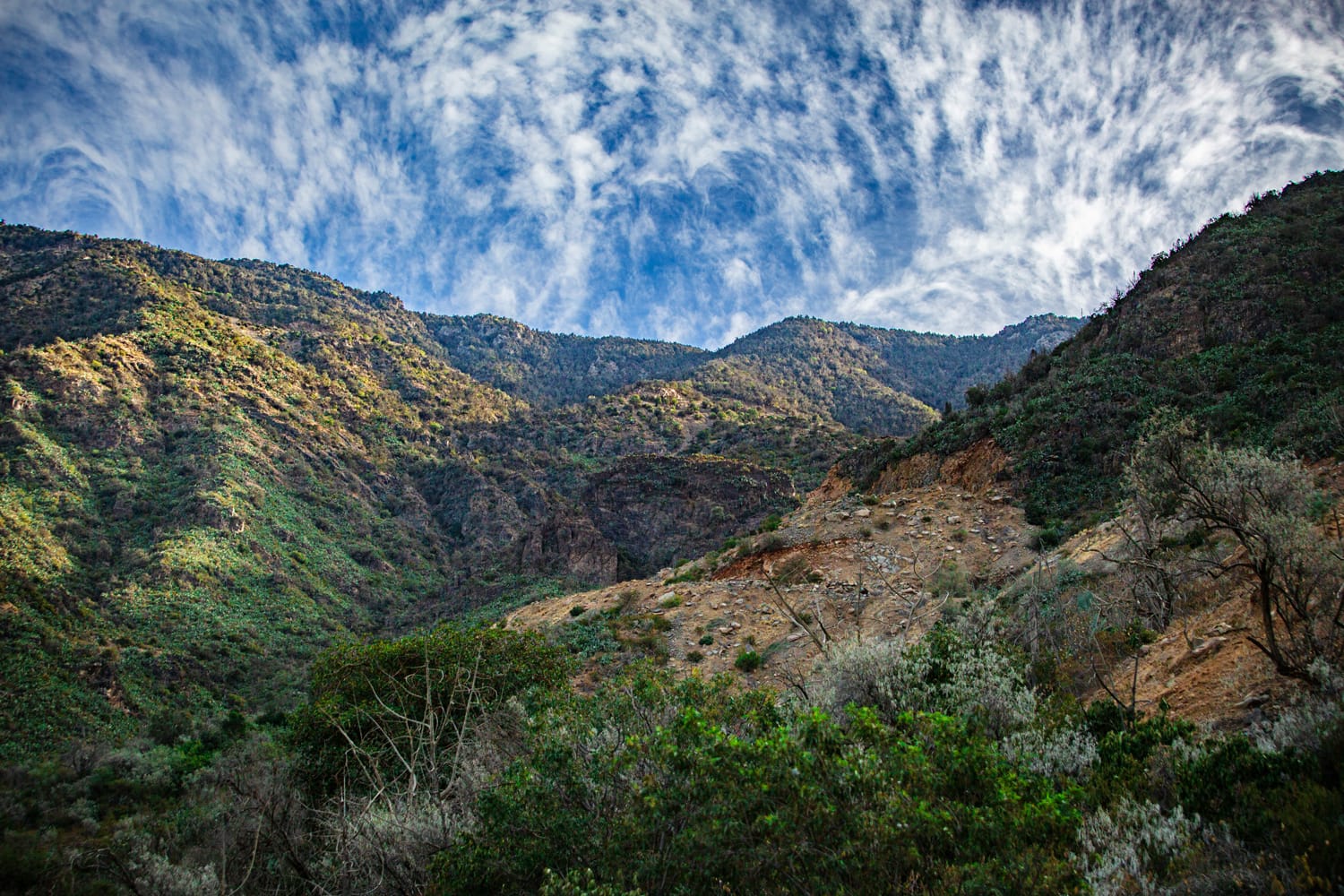
Jurf Rydah Protected Area
Code: RYD
It is one of the smallest nature reserves in the Kingdom with an area less than 10 km located in the southwest within the Sarwat mountain range. It has one of the highest local heights at about 3,000m above sea level. This distinguished topographic composition, in addition to climate factors represented by the highest rainfall recorded in the Kingdom, contributes to the presence of a distinctive biological diversity of habitats and species, especially plant diversity.
Wildlife Creatures:
There are about 19 species of endemic birds in the reserve such as the Pica asirensis, which is classified as an endangered species according to the IUCN Red List. Its presence is limited to an area of Hard mountains.
Nofooth Areeq Protected Area
Code: URQ
It is located in the central region, southwest of the city of Qassim. It covers an area of 2036.1 km² (785.7 square miles). Their environments are characterized by fortified sandy plains and some granite or basaltic mountains. With good vegetation, some birds, especially squid, are encouraged to resettle. The area is an old habitat for camels. It is expected that several factors such as the presence of good vegetation of mites, hoses and yearbooks. The ruggedness of the region contributes to its selection of a site for the resettlement of squid.
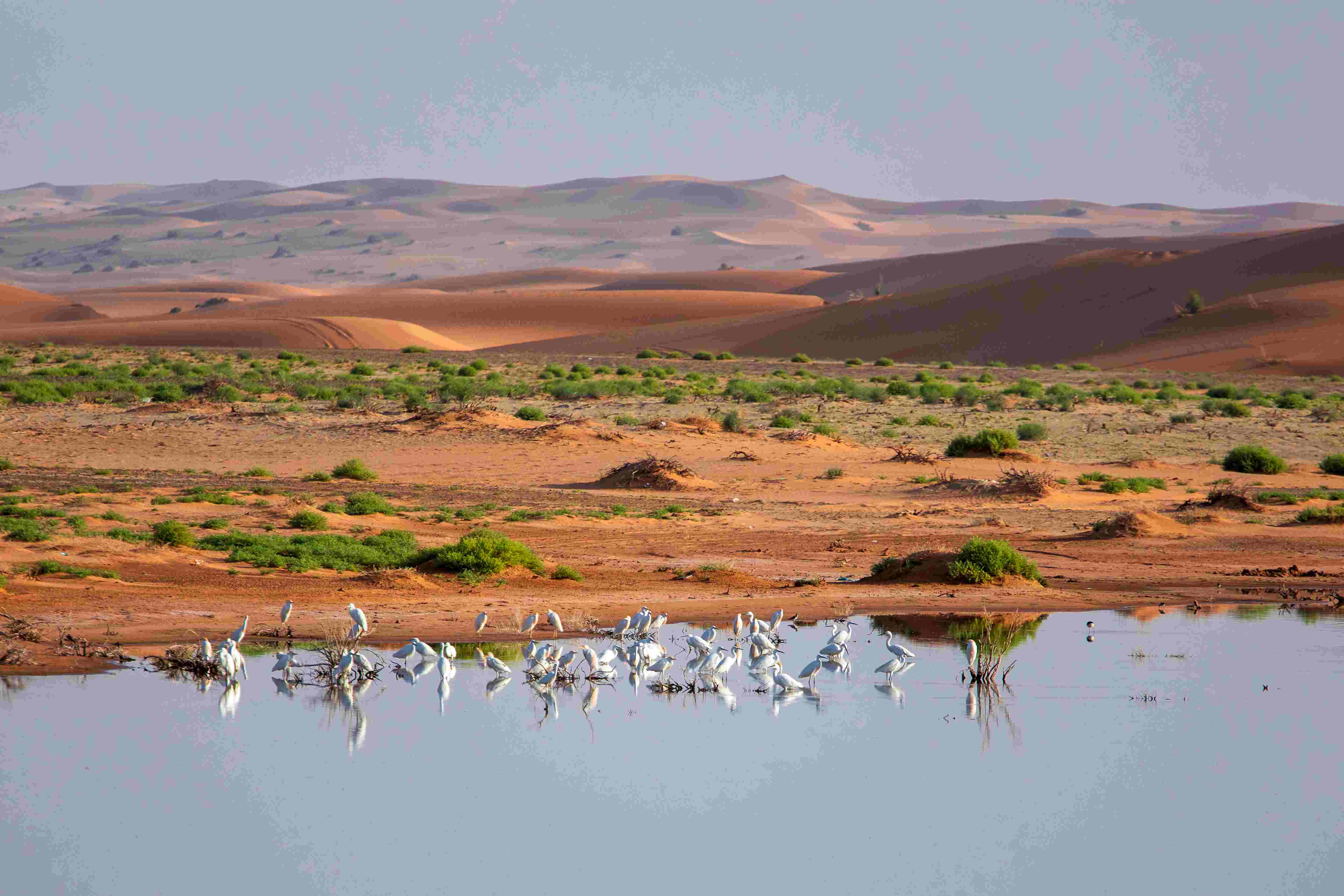
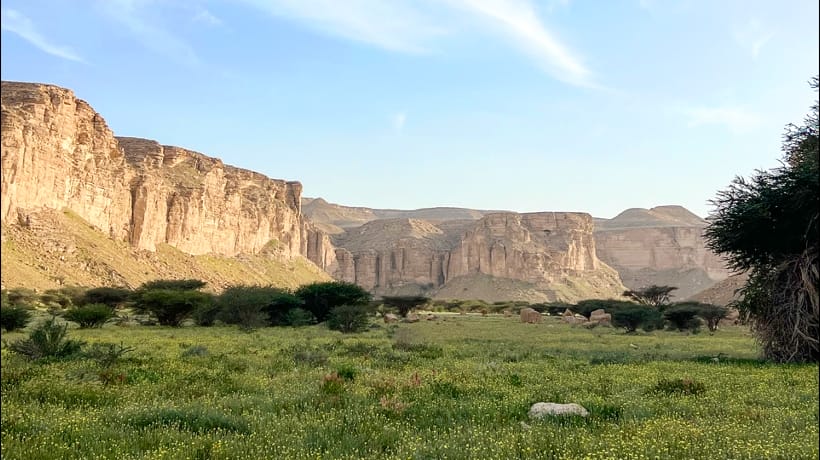
Ibex Protected Area
Code: IBX
It is located in the central region, south of Hariq and west of Houtat Bani Tamim areas, about 180 km away from Riyadh. It covers an area of 1,840.9 km ² (710.7 square miles). It is considered an rich resource PA and parts of it are classified with rich abundance of wildlife nature (protected by a special nature, a nature reserve biosphere). It is a large rugged plateau within a mountain range interspersed with many valleys, reefs, and some sandy areas. The height of the western edges of the mountains reaches 1097 AD.
The Plants
It contains trees of spleen, tan, lam, ladders, and lid, especially in protected valleys. Shrubs, herbs, and weeds are also found in small valleys and reefs where they grow well after rainfall.
Wildlife Creatures
The main reason for protecting this area was that it contained a small herd remaining from its wildlife state, whose numbers soon increased after protection. There are also needles, foxes, several types of rodents and birds, and the most important of which are sand partridge and reptiles. Numbers of ibex and Edami were resettled to the reserve in 1990. The species adapted to the nature of the region where numbers grew magnificently.
Majaama Al-Hadaab Protected Area
Code: HDB
Al-Hadaab Majaama Protected Area is located about 125 km east of the city of Rania. It covers an area of about 2256.4 km² (871 square miles) and is considered an exquisite PA, part of it is considered of special nature. This PA is characterized by dark volcanic mountains and sandy desert plains as well as containing many dotted granite domes with faded colors.
The Plants
Forty eight plant species have been registered with the PA including large groups of tan, term, tuber, and frankincense trees. It is expected that some of the fungal species that were present throughout the PA will be resettled and then disappear.
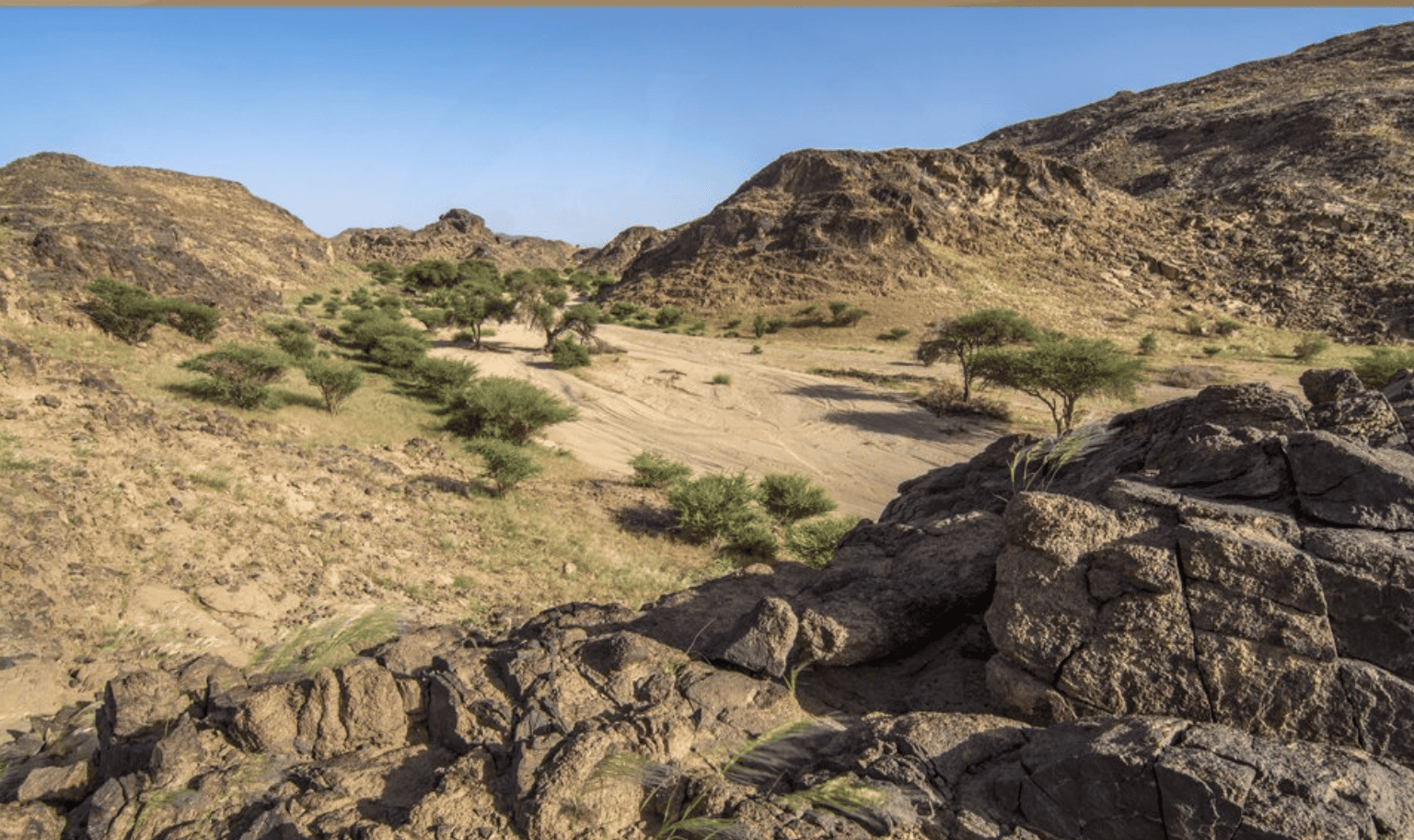
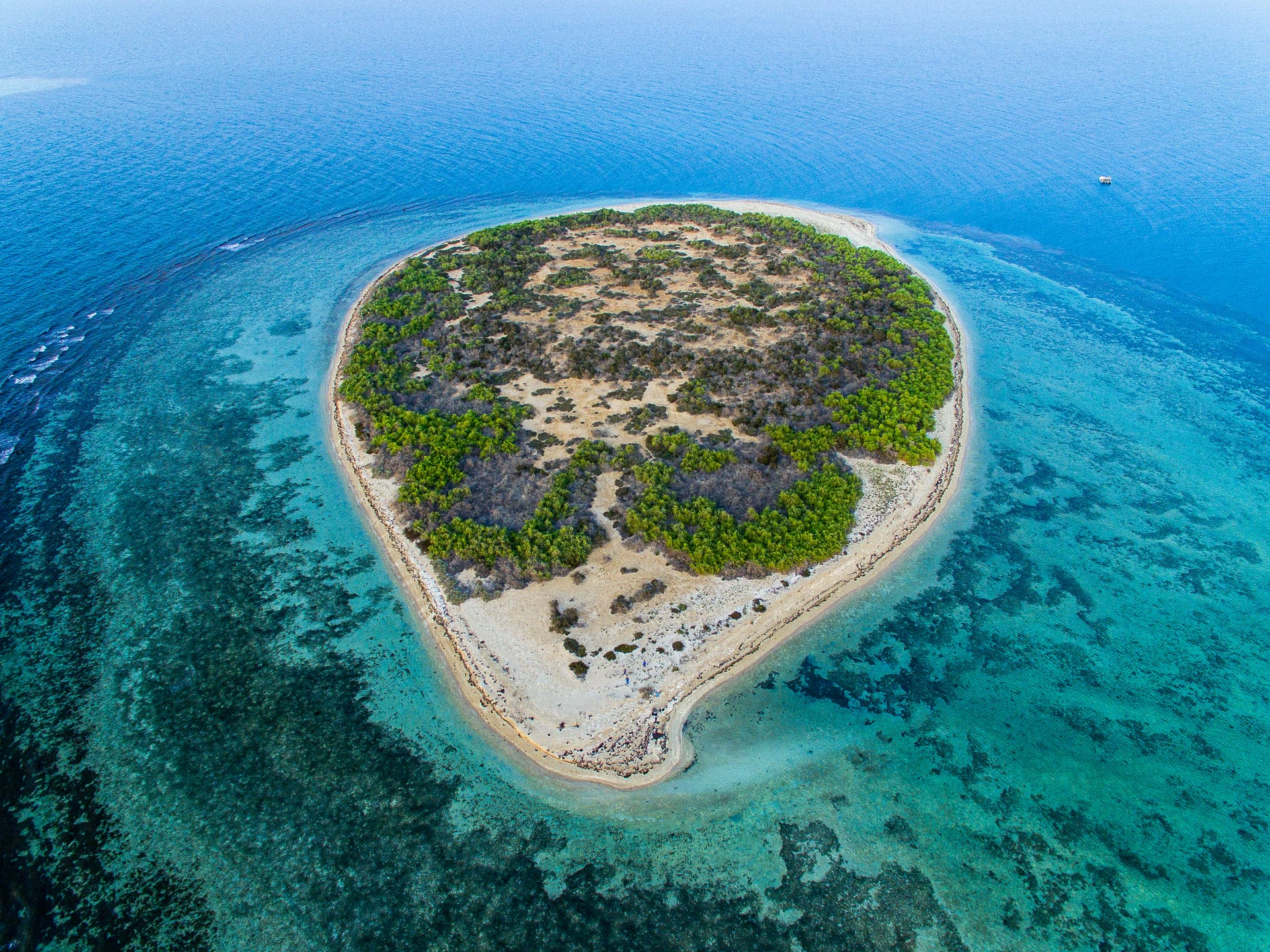
Umm Al-Qamari Island Protected Area
Code: QMR
Umm Al-Qamari Island PA is located southwest of the city of Al-Qanfat in the Red Sea. It consists of two islands, Umm Al-Qamari Al-Barani and Umm Al-Qamari Al-Fawqaniyah. The total area of the two islands is about 4.03 km² (1.55 square miles) which is considered of a special nature. It was called the mother of Umm Al-Qamari; because of the large number of Umm Al-Qamari birds in it, especially during the migration season. The surface of the two islands consists of populous limestone with an average height of three meters above sea level, and white coastal sands. Coral reefs on the wild island of Umm Al-Qamari are characterized by the fact that many of them are alive of varied species, which makes them distinguished for research.
The Plants
Plants thrive in the middle of the two islands. The most important of which are the rak, black, cactus, pendulum, and calf, which also thrive on the coasts, in addition to migrant and resident birds.
Wildlife Creatures:
There are many types of seabirds, coastal birds, and a number of wild birds, such as eagle punishment, the owner of the sad, white heron, and the African encircled lunar. As for marine life, it is characterized by a huge diversity of coral reefs and marine invertebrates.
Imam Saud bin Abdulaziz Protected Area
الرمز: SBA
The hunting park is located southwest of the Saga and Umm Al-Rumat Reserve ؛ It is considered an exploited resource reserve and part of it ( is a special nature reserve ) and has an average vegetation that helps preserve the genetic assets of some mammals, birds, and rare endemic reptiles. Protected environments vary between low-camel hills, open-bounty plains, valleys dominated by salt and tan trees, to parasympic and sandy plants. A limited number of squid birds were launched in the reserve as a natural extension of the spread of squid birds between the Imam Saud bin Abdulaziz PA and its other breeding habitats.
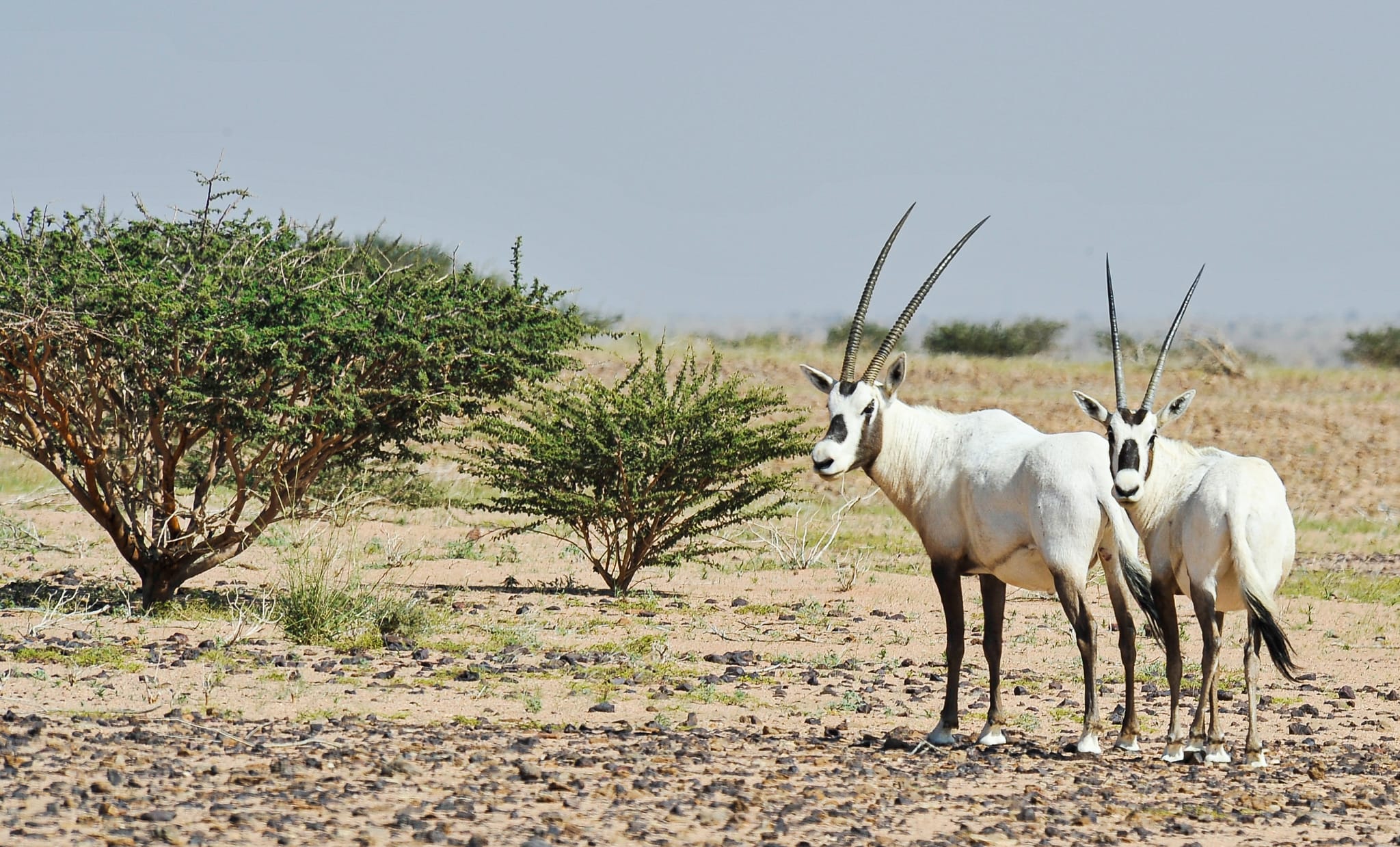
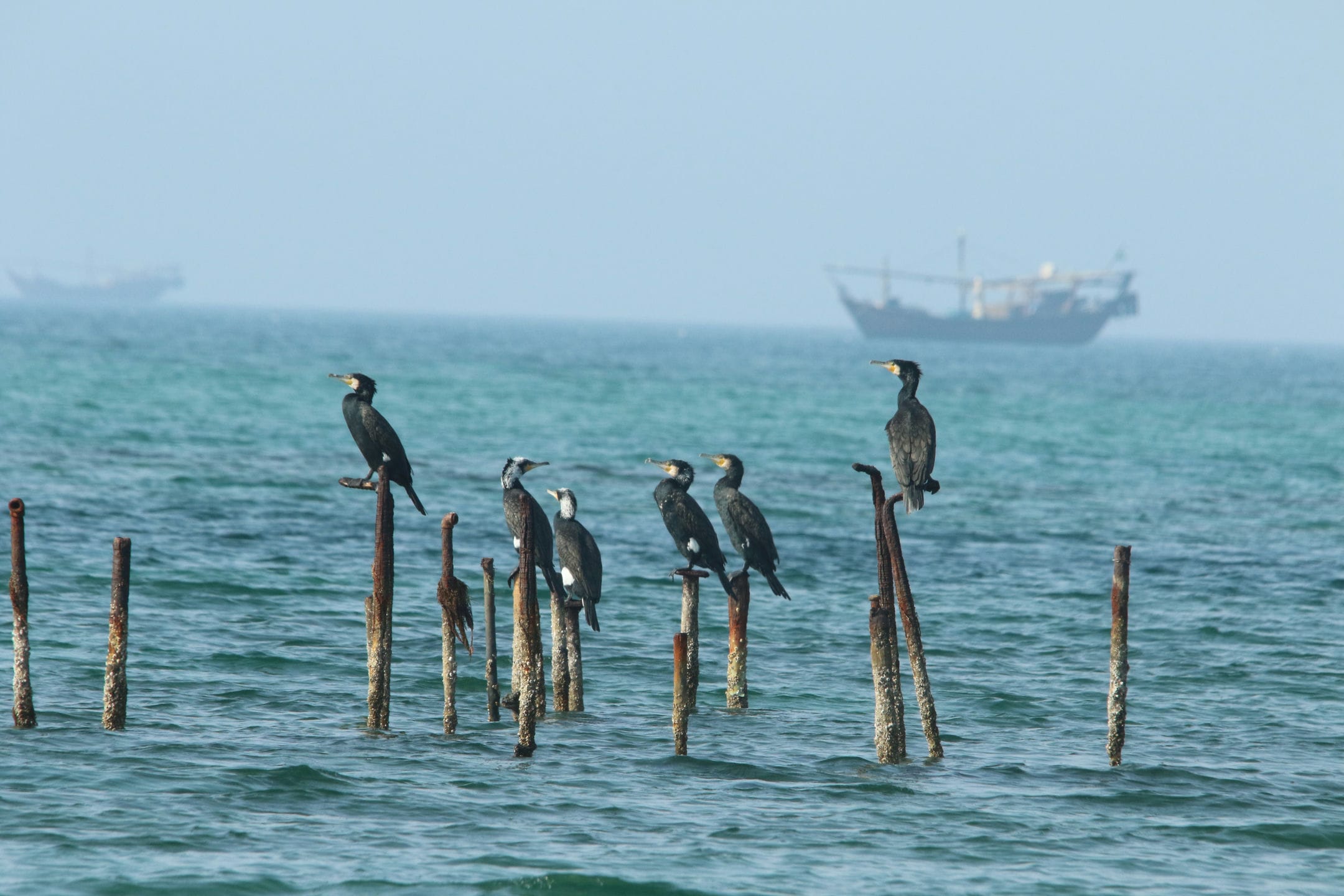
Jubail Marine Protected Area
Code: JUB
In the wake of the Kuwait Liberation War and oil pollution in coastal areas on the shores of the Arabian Gulf, several environmental studies and research have been conducted that suggest the necessity of establishing the Jubail Marine Biology PA to monitor pollution and its effects and thus preserve the marine biological diversity that characterizes the region. The Jubail Marine Biology PA is located along the eastern shore of the Arabian Gulf north of the industrial city of Jubail, south Abu Ali island and north of Ras al-Zour with an area of 2410 km² (930.5 square miles).
Wildlife Creatures:
The PA is characterized by the presence of different environments that contain different types of wildlife species i.e. red fox, a jackal, several types of rodents, and several types of birds, including two types of "wild creatures"" and several types of sermons and snakes. In coastal environments there are flamingos, types of riders, gulls, teratogenic birds, ducks, palshuns, and logistics gas. As for the water environment near the beach, there are many types of invertebrates, such as snails and cancers (crabs).
Farasan Islands Protected Area
Code: FRS
The Farasan Islands PA is located in the southeastern part of the Red Sea, about 42 km from the coast of the city of Jizan. The area of the PA is about 5408 km ² (2088 square miles). It is considered an exquisite PA where parts of it are classified by UNESCO MAB (Man and Biosphere) in 2021 as the first Saudi PA registered in such program. The PA include special category since it contain nature and Bio-spheric reserve. The group of Farasan islands includes more than 84 islands, the largest of which is the island of Farasan Kabir and Al-Sayyid ( and Qamah, which are populated islands. The average height above sea level ranges between 10 and 20 meters and may reach in some points 40 meters. The maximum height is 75m, as these heights are called locally in the mountains.
The Plants:
Among the most important types of trees are balsam, bolt, and rak, along with shura and kandel trees that are dense coastal ikat. Also, there were recent trees of muskite or invasive prosebas trees.
Wildlife Creatures:
The PA distinguishes the presence of the endemic Persian human antelope on some Farasan islands. In addition, there are some white-guilt mongoose and types of rodents and bats. As for birds, they are distinguished by their diversity and abundance, especially water, coastal and migratory birds, and the most important of which are the punishment of the Eagles, the Gray Pelican, the Dark Gull, the owner of the Hazen, the Hancour, the Sunset and types of Umm Al-Qamari. There are also some sermons and snakes.
